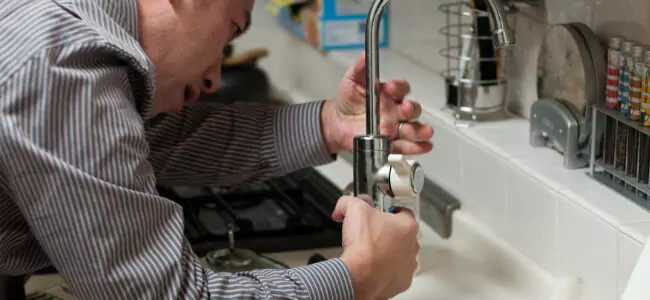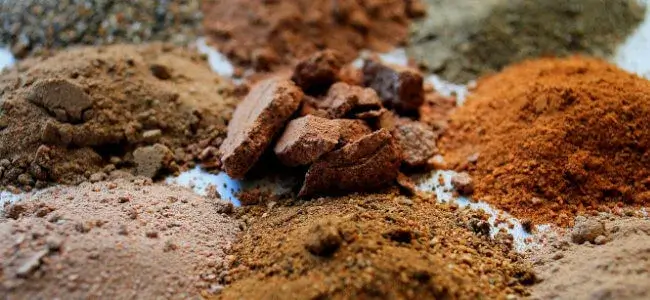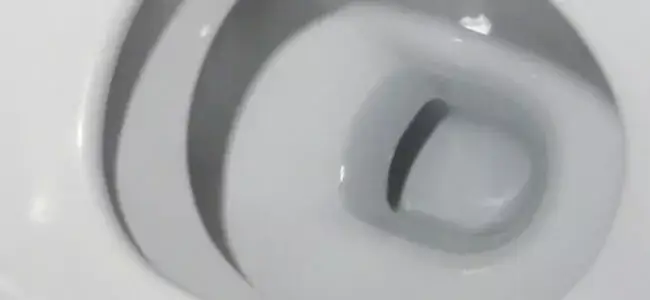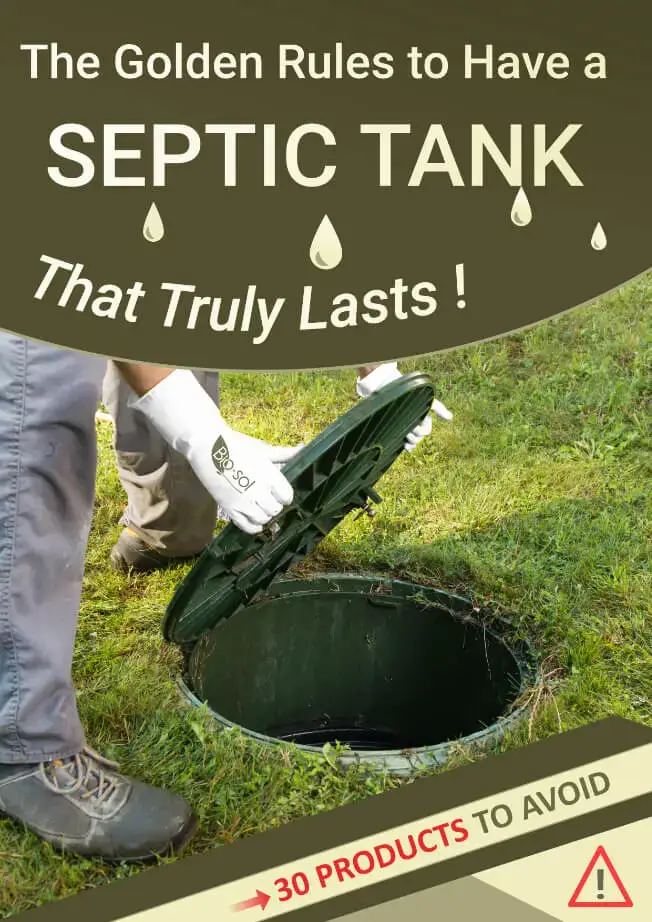Top 10 plumbing problems and how to solve them

TABLE OF CONTENTS
Depending on the age of your home, you will most likely need the services of a plumber at least once every three years. Obviously, there are a number of variables that affect how long your plumbing will work before you have to call a professional plumber. That said, there are also some plumbing problems that you can fix on your own without having to spend money on a plumber.
Here are the top 10 commonest plumbing problems and what you can do to solve them.
Smelly tap water
There are three main types of smells that you can get in tapped water. The first type is the smell of sewage, dirt or rotten eggs. This smell is usually caused by the presence of food particles and other organic waste in your drain. Bacteria digest the food particles and other organic waste in the drain and then release hydrogen sulfide. The gas might fill the drain near the sink and when the tap is turned on, it is forced upwards and out of the tap thereby releasing the smell into the air. Sometimes, this smell only occurs when you turn the hot water on. In such a case, it is likely that the smell is coming from bacteria that are growing in your hot water tank. Another type of smell is that of a swimming pool or bleach. In such a scenario, the smell will have been caused by too much chlorine in the water. The last type of smell is a metallic smell. A metallic smell is typically caused by corrosion of the copper that is used for plumbing in the house.
Solution to this plumbing problem:
- If you haven’t used the sink in a while – make a mixture of baking soda and water (ratio should be 1:1), and pour it down your drain. Wait for 20 minutes and then flush it away by pouring water in the sink.
- When tap water smells like rotten eggs – check to ensure the water heater temperatures is at the recommended levels (115 -125 degrees) and if not adjust accordingly. Draining the water inside the hot water tank can also help.
- When tap water smells like bleach – this is usually a result of high chlorine concentration. Running the water for a minute or two should take care of the smell.
- When tap water has a metallic smell – running the tap for a minute will get rid of the smell.
- If the smell is a result of organic waste – use a biological degreaser like Bio-Sol’s biological degreasers to introduce bacteria and enzymes that can help to digest the organic waste without harming the septic tank.
Toilet smells
Smelly toilets are usually caused by contaminated water sources. This is a common problem for homes that have a septic system. A septic system relies on bacteria in the septic tank to break down organic waste. Due to the harmful products people use, the bacteria colony gets affected and that hampers the rate at which organic waste is digested. As a consequence, organic waste is passed into the drain field before it is fully digested thereby resulting in blockages. These blockages result in leakages which eventually contaminates the underground water. In some instances, backups might happen in the house and that will cause the toilet to have the foul hydrogen sulfide smell (smells like rotten eggs).
Solution to this plumbing problem:
Bio-Sol’s shock treatment product should restore your septic system to proper working condition. It does this by introducing billions of bacteria and enzymes into the septic system. These bacteria start digesting the organic waste immediately which eventually unclogs the drainfield.
Leaking faucets
This is one of the commonest plumbing problems in most homes. Leaking faucets are not only annoying but they waste a lot of water in the long run. A small leak might seem inconsequential but the cumulative effect is huge. For instance, a leak of 10 drops every minute ends up wasting a whopping 300 gallons of water in a year. If you have a septic system, a leaking faucet may contribute to hydraulic overload in the septic tank which will affect the efficiency of the bacteria in the digesting of the organic waste. Faucet leaks are typically caused by worn out washers or “0” rings so they are relatively easy to fix.
Solutions to leaking faucet plumbing problems
Step 1: turn off the hot and cold water supply valves. These are usually below your sink. If you can’t see them below the sink, shut off the main meter for the whole house.
Once that is done, follow the following steps depending on the type of faucet you have.
Fixing a leaking Compression faucets
Step 2: remove the decorative index cap from the handle. You can do this by removing the handle screw and then gently prying underneath the handles to remove them.
Step 3: loosen the bonnet nut using an adjustable wrench. Thread your stem out of the faucet and unscrew the screw that holds the washer to the stem.
Step 4: fasten a replacement washer to the stem and then reinstall your stem, bonnet nut and handle.
Fixing a leaking two-handle washerless faucet
Step 2: access the cartridge the same way you would for a compression faucet and then start at the valve handle as you work your way down.
Step 3: remove the cartridge and then replace it with a new one.
Step 4: reinstall the stem, bonnet nut and handle.
Fixing a leaking single-handle washerless faucet
Step 2: the exact method of removing the valve cartridge varies depending on the manufacturer. However, the first thing to remove should be the handle screw which is usually located under the handle although sometimes it may be under a hood on top of the handle. You can then proceed to unscrew the faucet handle.
Step 3: Loosen the nut to reveal the valve cartridge and then remove the clip that holds the valve cartridge, pull the cartridge out and replace it with the new one.
Step 4: Reinstall your bonnet nut and handle.
Leaking pipes – another plumbing issue
Leaking pipes is another plumbing problem that can make a huge mess in your home and garden in addition to causing serious damage to property, especially if not repaired in good time. Visible leaks usually result in flooding while the hidden leaks can result in subsidence over time. Leaking pipes are usually caused by normal wear and tear or some other physical damage that might cause the pipes to break.
Solution to this plumbing problem:
It is a good idea to hire a licensed plumber to deal with pipes that are leaking. It is highly probable that the plumber will need to excavate the ground to get to the problem pipe. Replacing faulty pipes is a delicate process because it might interfere with the water supply of your neighbors and this is one more reason why you should leave the task to qualified plumbers who know how to solve the plumbing problem with minimum interference to the water supply.
Constantly running toilet
Toilets haven’t changed too much over the years – whichever the model you have, they have the same operating principle. After each flush, water fills the tank thereby lifting a floater which shuts of the water as soon as it reaches a certain level. There is a lever that usually opens a flapper to allow for flushing and it falls back into position whenever the water level drops. This mechanism of operation can fail thereby resulting in the flush becoming too wimpy or the toilet running constantly.
Solution to this plumbing problem:
Before you attempt to fix a running toilet, make sure the water is turned off at the toilet base and then flush to make sure the toilet tank is empty. You can soak up any excess water in the tank with a sponge. That should give you a dry working environment for checking on the different components as described below.
- Start by checking the valve seat to ensure there is no corrosion and clean it if need be. Ensure the guidewire is not misaligned.
- Faulty flapper or flush valves are the commonest reasons for constantly running toilets. The valve is made of rubber and it can get deteriorated over time because it is always underwater. If you rub the valve gently and get streaks of it on your finger, your valve is worn out and needs to be replaced. Go with the worn-out valve to a home improvement store to make sure you get the exact same one and then replace it.
- Every toilet tank has an overflow tube and sometimes the leaking might happen from there. This usually means that the float arm is not properly screwed in place. Screw it tightly in position and that should fix it.
Frozen pipes
Frozen pipes typically happen during winter. Water expands as it freezes and this can exert unbearable pressure on the water pipes. Sometimes, frozen water can even result in bursting of pipes. The pipes which freeze most frequently are those that are exposed to the elements e.g. swimming pool lines, water sprinkler lines, and any pipes that are outside the home. Pipes that are in any unheated segment of your home like the basement, garage, and attic can also freeze in winter.
It is a good idea to remove and drain any hoses that are used outside the home just before winter. Also, open the outside hose bibs to allow all the water to drain out and keep the outside valve open to allow for any freezing water to expand without bursting the pipes. You can also install insulating materials on an exposed pipe to ensure they are safe from freezing in winter.
Solution:
Use a hairdryer to thaw the frozen water by blowing warm air on the pipe. Locate where the pipe enters the house and use the dyer there. Do not attempt to use a blow torch because that will cause the water to boil in the pipes which might also make the pipes to break.
Noisy pipes
There are four main reasons why pipes can be noisy. First on the list is if the mounting straps are loose. When the pipes are not held firmly in place, the rushing water can make them rattle. The second reason for noisy pipes is high water pressure. When the pressure of water is higher than normal, it can cause the pipes to vibrate thereby making noise. The third reason is described as the “water hammer.” This is when a rush of water in a narrow pipe suddenly hits a closed valve. The fourth and last reason why pipes can be noisy is insufficient cushioning. Water pipes can tremble as water passes through them thereby causing some noise.
Solutions:
- Check all of the pipes mounting to ensure they are tightly in place and replace or tighten any loose ones. This should take care of any rattling noises. If you are dealing with old pipes, anchoring them might be a problem and you might need to ask for professional assistance from a plumber.
- Normal water pressure should be between 30-55 psi. The high water pressure plumbing problem can easily be solved by reducing the pressure entering your house on the water pressure regulator or valve. If you do not have a regulator installed in your home, you might want to invite a plumber to install one for you.
- A functional air chamber can help to prevent water hammers. The air chamber will serve as a shock absorber when a stream of water comes to the end of a pipe. If you experience water hammers in your house, it means you do not have air chambers installed and you should consult a plumber to install it for you.
- Adding insulation around water pipes can help reduce rattling sounds. Use secure insulation foam or rubber but do not wrap the pipes too tightly. You want to leave some space for expansion and contraction of the pipes.
Slow or clogged drains
A slow or clogged drain can be annoying. Not only does the water flow too slowly but it also leaves behind a greasy residue in the bathtub and in the sinks when the water finally drains out. Slow and clogged drains are caused by a number of factors including but not limited to debris getting lodged in the pipes. If only one drain in the house is slow, then the problem is only centralized to that drain and solving it will be easier and faster than when the problem is in the entire house.
Solution to this plumbing problem:
- If you have a septic system, then there is a huge chance the clogged drain is caused by a full tank or a failed drainfield. If this is the case, just use Bio-Sol’s shock treatment product and it will deal with the problem by introducing billions of bacteria into the septic system which digest organic waste thereby dealing with the clogged drainfield problem
- If the problem is only in one drain, there is a chance that some debris is blocking the pipes. You can try using the good old plunger to unblock the drains.
- If the plunger fails to unclog the drains, you can try using the snake technique to unclog the drain manually. Take a long wire and “snake” it down through the drain as far as you can get it to go. If you feel the debris blocking the wire, woggle it around until it loosens up and finally remove your wire and flush some water down the pipe. Once this is done, add a biological degreaser to remove any organic debris that might still be stuck in the drains.
- If none of the above methods work, call a plumber to help you troubleshoot and fix the elusive plumbing problem.
Odors in the home
Odors in your home are almost always indicative of a plumbing problem. A common cause of home odors is the dying out of a trap in your basement floor drain thereby giving septic tank gases room to vent back into your home. Another common cause of odors in the home is a frozen or damaged vent. The vent maintains and equalizes pressure in drainpipes as wastewater drains through them. If the vent stops working, the toilet and faucets in your home will start gurgling and release odors. The sump pump could also cause home odors especially if the cover on the ejector sump pump basket is not sealed properly.
Solution to this plumbing problem:
- Periodically fill your floor drain trap with water to ensure the trap does not dry out. Also, inspect the cleanout access plug in the drain to make sure it is not loose because the sewer gases might be escaping through it.
- Inspect your vent to ensure it is in good working condition. If it is frozen due to cold, just wait for a warm day and it will thaw. But if you are in winter and a warm day is not coming anytime soon, use a jetter to unfreeze the vent.
- If you have a septic system, deal with the root cause of septic odors by using a biological treatment to clean the septic system. Bio-Sol’s biological treatment solutions work very well because they are made from bacteria and enzymes so they will not harm your septic system.
Inconsistent water temperatures
Apart from inconsistent water temperatures being annoying, it is also a health hazard. For instance, if the shower dispenses too hot water, the user might easily suffer from scalds. Additionally, water that is above 112°F (44.44°C) can damage your lipid layer. Even though the ideal hot water temperature for the shower is 112°F (44.44°C) it is possible for the shower to release water that is as hot as (140°F ( 60°C). But it is not just a hot water problem – it is also possible to get sudden bursts of cold water and that can be really startling.
Solution to this plumbing problem:
- In some cases, the water temperature fluctuations are caused by competing appliances so check to ensure this is not the case before you think of any other solution. For instance, is a dishwasher starts to cycle; it might cause the shower to become cold.
- Check the water heater settings to ensure the settings are ok
- If the hot water settings are as expected and there is no competing appliance that is causing the temperature fluctuations, it will be a good idea to call a plumber to look into the issues.
Conclusion
Plumbing is often misconstrued to be messy, complicated and hard work. Most people resort to dialing a plumber’s number as soon as they spot a small leak. But as we have seen in this article, there are some plumbing issues that are extremely easy to fix. And the rule of thumb is to always make hay while the sun shines. The more you delay in fixing the plumbing problems, the worse it gets. For instance, fixing a leak as soon as you notice it will be easier than waiting for a couple of months before attending to it. However, if you attempt to fix your plumbing and run into some unforeseen problems, talk to a qualified plumber immediately to avoid making the problem worse than it already is.
OUR LATEST BLOG POSTS

Strange facts about septic systems
If you are a septic system owner, you might have heard all manner of myths. For instance, there is a common myth that throwing a dead cat in the septic tank can help rejuvenate bacteria and thereby make the septic tank more effective. But is this even true? In this article, we will not only answer that […]

Soils types and their impact on septic systems
SOILS TYPES AND THEIR IMPACT ON SEPTIC SYSTEMS However good your septic system is, it depends on the right soil type to complete the process of purifying the wastewater from your home. The soil type in the drainfield area will determine how well the effluent is filtered and if the water that is sent back to the […]

Avoid flushing these if you have a septic tank
Most homeowners wrongfully assume that their toilet can serve as some sort of garbage disposal. As a result, they end up flushing all manner of things in the toilets. Some of the things that are flushed down the toilet are actually innocent mistakes because homeowners think that is the right way to dispose of the products while in other cases, it is just a don’t care attitude. Whichever the case may be, flushing some of these things can result in septic system failure and it could cost you a fortune. We have rounded up some of the commonly-flushed products that you should never flush if you have a septic system.
PERFECT! I WOULD NEED...
Discover which products are the best for your needs!You can contact us at 1-800-378-6132 (toll free) or click on the following button to access our free online evaluation.
GET A QUOTE ONLINELog in to your account
Whoops! It happens sometimes...
CREATE A NEW ACCOUNT
CONGRATS!
You are now registered and ready to go. You can add and change any of your information on your client profile.
Unfortunately, we do not ship our products to the USA at the moment.
But, if you live in the United States and would like to order them, please fill in the form below. You will then be notified as soon as they are available in your country.
Thank you for your understanding!
Malheureusement, nous n’expédions pas nos produits en France pour le moment.
Mais, si vous êtes résident français et aimeriez les commander, remplissez s’il vous plaît le formulaire ci-dessous. Nous pourrons ainsi vous aviser aussitôt qu’ils seront disponibles dans votre pays.
Merci de votre compréhension!

-
30 products to avoid
-
What to replace them with
-
And everything you should know about your septic system
DOWNLOAD THIS FREE EBOOK!
Which email address should we send it to?


